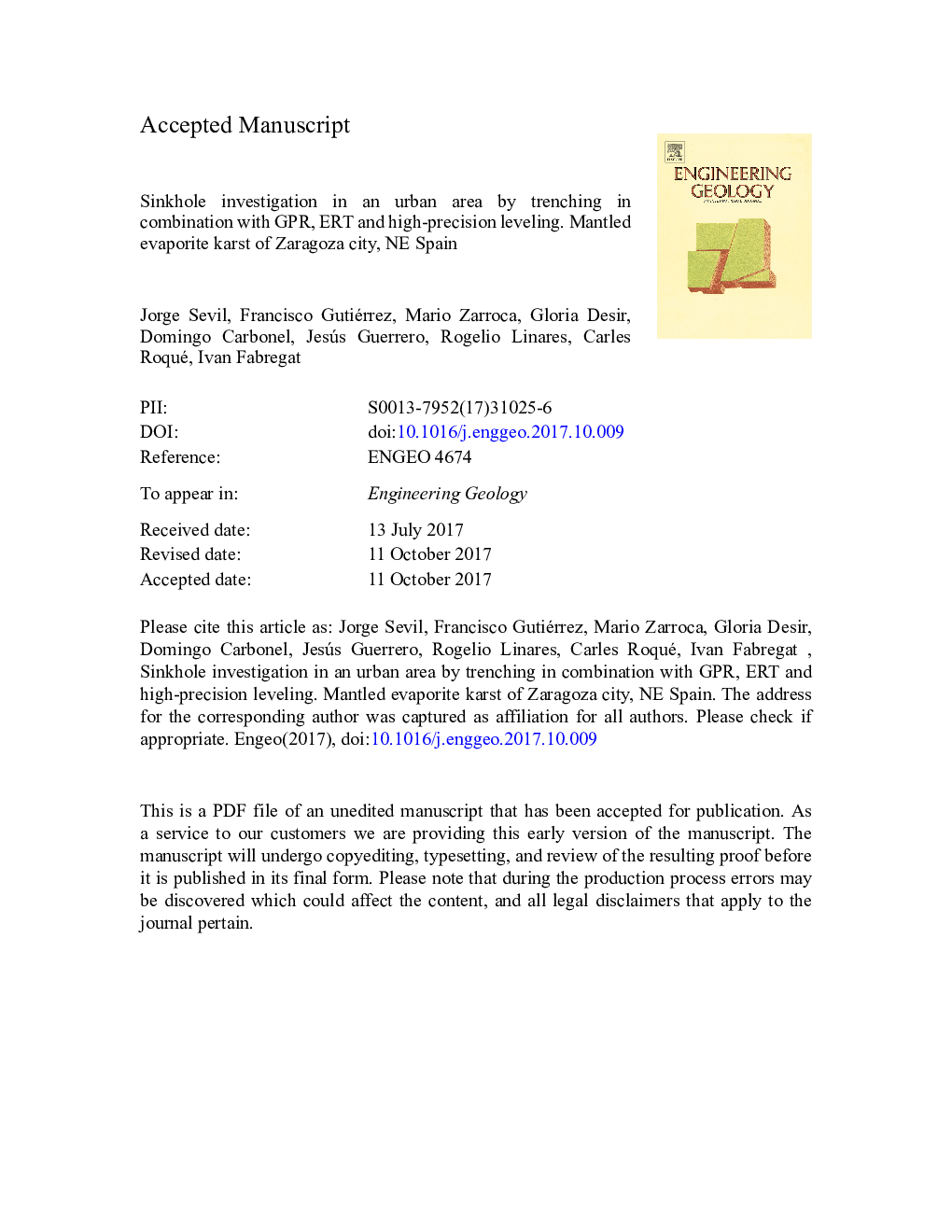| Article ID | Journal | Published Year | Pages | File Type |
|---|---|---|---|---|
| 8916016 | Engineering Geology | 2017 | 45 Pages |
Abstract
Sinkhole risks are becoming particularly severe in urban areas that lack careful planning and where karst depressions are frequently filled and developed. These built-up areas are the most challenging for sinkhole investigation; they are the ones that require the highest priority and the application of novel approaches aimed at reducing the epistemic uncertainties associated with hazard assessments. This work illustrates the strengths of the rarely used trenching technique for the investigation of sinkholes in mantled karst areas. The approach has been tested on a buried sinkhole in the evaporite karst of Zaragoza city, analysing and comparing data gathered by trenching, Ground Penetrating Radar (GPR) using shielded and unshielded antennas with different frequencies, Electrical Resistivity Tomography (ERT) and high-precision leveling. The sinkhole is located beneath a street and has led to the demolition of buildings, creating a risk situation that requires careful assessment and management. Trenching provided the largest amount of objective data required for hazard assessment: (1) Precise location of the sinkhole edges. (2) Internal structure, cumulative displacement, subsidence mechanisms and their contribution. The trench exposed an asymmetric structure with a minimum vertical displacement of 6.2 m, comprising a complex collapse with different generations of faults and two marginal zones affected by gentle inward tilting. Collapse faulting accommodates at least 70% of the subsidence. (3) Age of the sinkhole and average subsidence rate. The sinkhole was initiated sometime before or within 337-435 cal yr AD, indicating a long-term subsidence rate of ca. 3.7-4.2 mm/yr. (4) Kinematic style, characterised by episodic collapse events, as supported by leveling data. The retrodeformation analysis, together with geochronological data, indicates four collapse events with a recurrence of around 400 years and suggests enhanced activity since ca. 1950 AD. The performance of GPR was highly variable, depending mainly on the type of antenna and the timing of data acquisition. The best-quality data were obtained with shielded antennas and during relatively drier conditions. The rather poor performance of ERT, commonly an adequate method for resolving subsidence structures at depth, is attributed to the complex structure of the collapse sinkhole, with spatially-dense and abrupt resistivity changes in resistivity. This case study strongly substantiates the implementation of the relatively inexpensive and highly objective trenching technique in sinkhole investigations.
Keywords
Related Topics
Physical Sciences and Engineering
Earth and Planetary Sciences
Geotechnical Engineering and Engineering Geology
Authors
Jorge Sevil, Francisco Gutiérrez, Mario Zarroca, Gloria Desir, Domingo Carbonel, Jesús Guerrero, Rogelio Linares, Carles Roqué, Ivan Fabregat,
